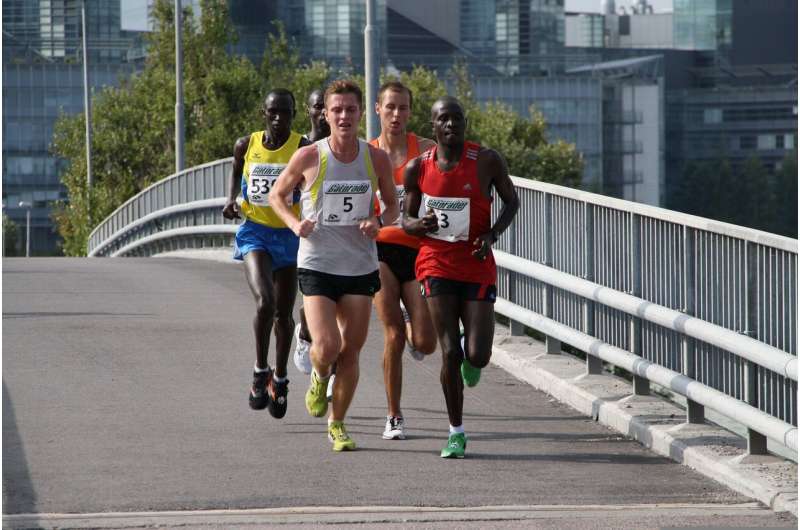August 18, 2023 report
This article has been reviewed according to Science X's editorial process and policies. Editors have highlighted the following attributes while ensuring the content's credibility:
fact-checked
trusted source
proofread
Optimizing pacer formations in front of marathon runners to reduce run times

A team of mechanical engineers at Ecole Centrale de Lyon has found that long-distance runners using pacers to reduce drag can improve their run times by running in particular formations. In their study, reported in the journal Proceedings of the Royal Society A: Mathematical, Physical and Engineering Sciences, the group ran simulations of long-distance runners using mannequins in wind tunnels.
Prior research has shown that when geese in flight line up in certain formations, they can serve as a shield against resisting air, reducing drag. In so doing, they can increase their speed or reduce the amount of energy used to get from point to point.
In 2019, a long-distance runner named Eliud Kipchoge used this idea to reduce the time it took him to run a marathon. And it worked, dramatically. Though the race was unofficial, Kipchoge managed to become the first person ever to run a marathon in under two hours. In this new effort, the research team looked at the technique used by Kipchoge and found ways to improve the formation.
In his race, Kipchoge had five pacers (team members who help runners keep on pace) run ahead of him in a V formation, followed by three pacers in a smaller V formation behind him. That was enough to reduce the drag Kipchoge experienced, which allowed him to run slightly faster—his time was 1:59:40—three minutes and 33 seconds faster than his times without the pacers.
In their lab, the research team set up their mannequins in a wind tunnel and tested the amount of drag on a single mannequin behind the pacers arranged in several formations. They were able to replicate the results obtained by Kipchoge and his team. That formation, they found, reduced drag by half.
In subsequent tests, they found even better results using different pacer formations. One formation resembling a lowercase "t" was the winner. If Kipchoge had used it, the team suggests, he could have reduced his time by an additional 40 seconds.
Kipchoge plans to test his formation in an official race next month, though he will have to gain the cooperation of competing athletes to help fill out the formation. If they take turns helping one another, they could all run faster.
More information: Massimo Marro et al, Wind tunnel evaluation of novel drafting formations for an elite marathon runner, Proceedings of the Royal Society A: Mathematical, Physical and Engineering Sciences (2023). DOI: 10.1098/rspa.2022.0836
© 2023 Science X Network



















